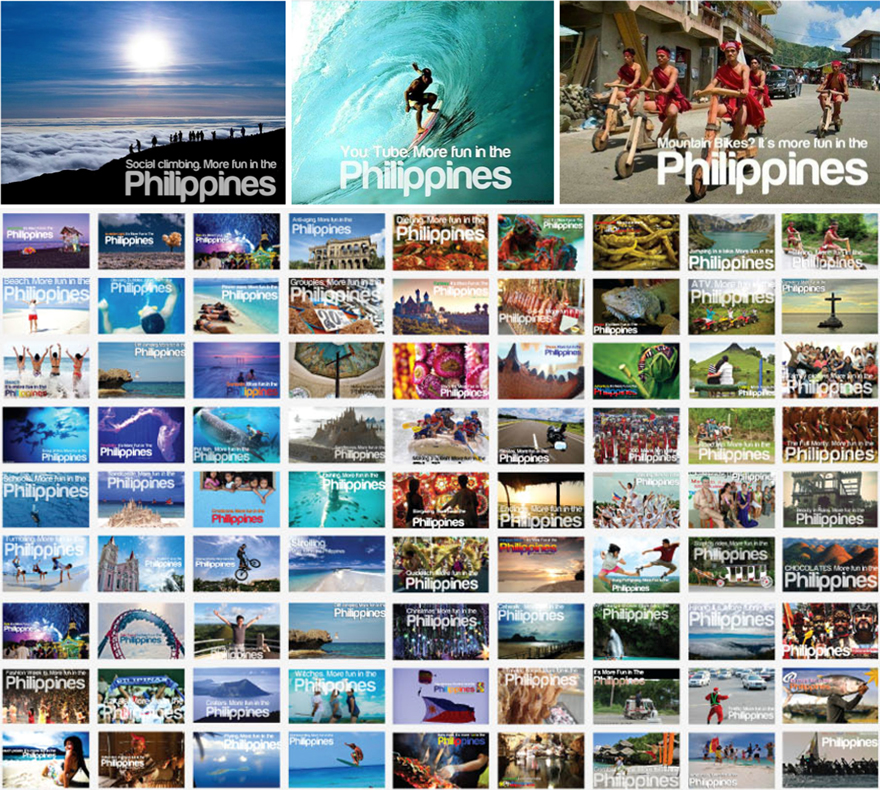The Philippines Department of Tourism’s "It's More Fun in The Philippines" campaign won the Grand Prix at the WARC Prize for Asia Strategy in 2013 and has since thrived as a long-term platform for promoting the country on a global stage.
In 2012, the "It's More Fun in The Philippines" campaign was launched to help address the country’s cripplingly bad image problem that deterred potential tourists from visiting the country. Annual tourist arrivals had flatlined at below four million, far below its neighbouring countries in Southeast Asia.
To make up for the lack of marketing funding, the campaign relied on a different resource – the people of the Philippines. Through social media, 95 million Filipinos were transformed into a massive and creative tourism salesforce.
In its first year, the campaign helped increase visitors by 7%, break the four million tourist mark for the first time, and outperformed the region’s strongest competitor and their most effective campaign – “Malaysia. Truly Asia"
The 2013 Prize chair, Leanne Cutts (then president & managing director Japan at Mondelez International, and now group CMO for HSBC), said the campaign stood out due to the simplicity of the idea, and its potential to evolve across media and across time.
"The winning campaign was not only an idea for its own category, but it spilled over into other parts of life," she said. "We felt that this was an enormously valuable idea that could be sustainable and grow over time."

Tony Harris, the then chief executive of BBDO Guerrero (now chief executive of BBDO Hong Kong), reflects on the campaign’s impact in this Q&A with WARC.
Thinking back to the winning campaign, would you still use the same strategy today that you did then?
I remain immensely proud of the fact that “It’s More Fun. In The Philippines” is still going from strength to strength seven years after its first introduction. At the change of government there were initially rumours that the new regime wanted to mark a change with the campaign that came to nothing ultimately – mainly due to the incredible galvanising effect that the work had not just on the travel industry but the nation as a whole.
Whether you are a taxi driver, a tour operator or a government minister, “It’s More Fun…” is an idea that is really easy to get behind because it is a competitive claim based in the simple truth that the warmth of the Filipino people is a virtual guarantee to make your stay there even more enjoyable and even more memorable.
And this is the ultimate abiding strength of the idea, it’s true and anybody who has spent any time in the company of Filipinos will bear testament to the fact.
Any unfinished business with this particular campaign?
From the day we launched the campaign, “It’s More Fun…” has taken on a life of its own – it really does belong entirely to the nation and its people. From the hundreds of thousands of memes from Filipinos the world over to very visible positive commercial support and backing from other brands, the humanity and flexibility of the campaign has never failed to bring surprises.
BBDO Guerrero still have the privilege of generating work for the campaign and so will continue to explore new ways of beguiling all of the campaign’s audiences. As the campaign, has grown, more specific messaging has come into play – be it for frontline operators such as street sellers and taxi drivers, for corporate audiences or domestic travellers. The campaign has never lost its ability to charm by genuinely reflecting the sometimes exotic and sometimes chaotic experience of visiting this unique destination.
Did winning the Grand Prix that year help improve the overall culture of effectiveness at the agency? Did it help spark inspiration or drive motivation in that regard?
Well, I would like to think that as we won, we had a pre-existing culture of effectiveness but there is no doubt that winning the Grand Prix set standards that all of the BBDO offices I have since worked in have tried to attain. It is a rigorous but rewarding competition and one that I have always encouraged our teams to support. The lesson from winning really was about preparation and understanding how campaigns performed and what kind of game -changing results would merit the effort of putting together a paper.
What was it like to win the WARC’s Asia Strategy Grand Prix? What made this award different from the others?
Aside from the fact that I had to go straight to the airport afterwards and the airline wouldn’t let me put my big cheque in the overhead compartment, it was a genuine feather in the cap for the whole agency to be recognised on such a scale and against such broad competition. Because it took such rigor in analysis, in construction and in narrative, many people played their part but to be recognised for a campaign that meant so much to everyone individually remains a cherished moment still.
What would be your message or advice to this year’s Prize hopefuls?
I still count myself amongst the hopefuls even now and so would hate to give away my trade secrets!
Seriously though, the strength of this campaign was that it was always based on a clear and present truth that was equally clear to everyone who came into contact with it. A tremendous emotional insight produced incredible business results – and this is why excellence in advertising will always remain important no matter what the changing circumstances dictate.
WARC subscribers can read the full case study here.
This article is part of a special content programme marking the tenth anniversary of the WARC Prize for Asia Strategy. To find out more about this year’s Prize, click here.

